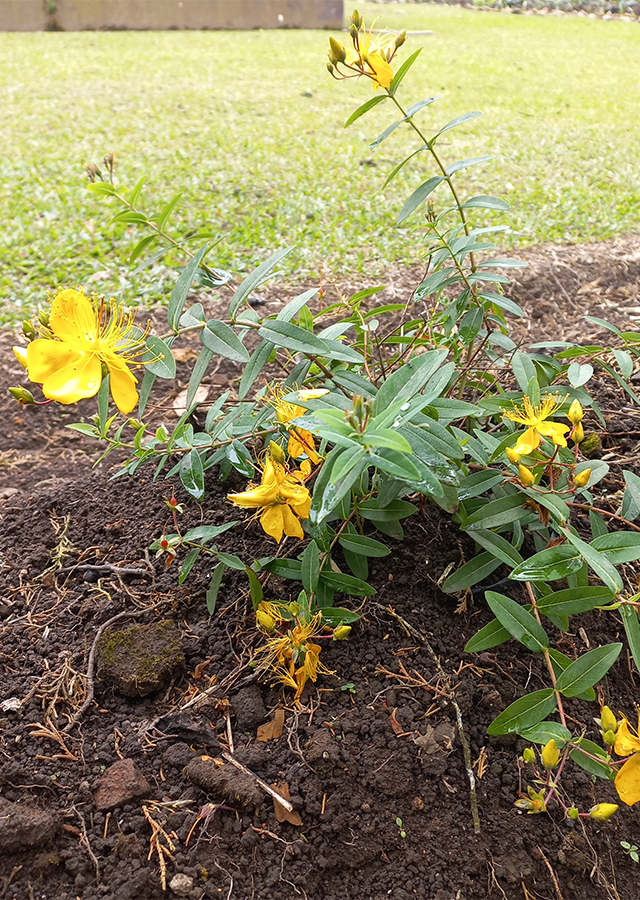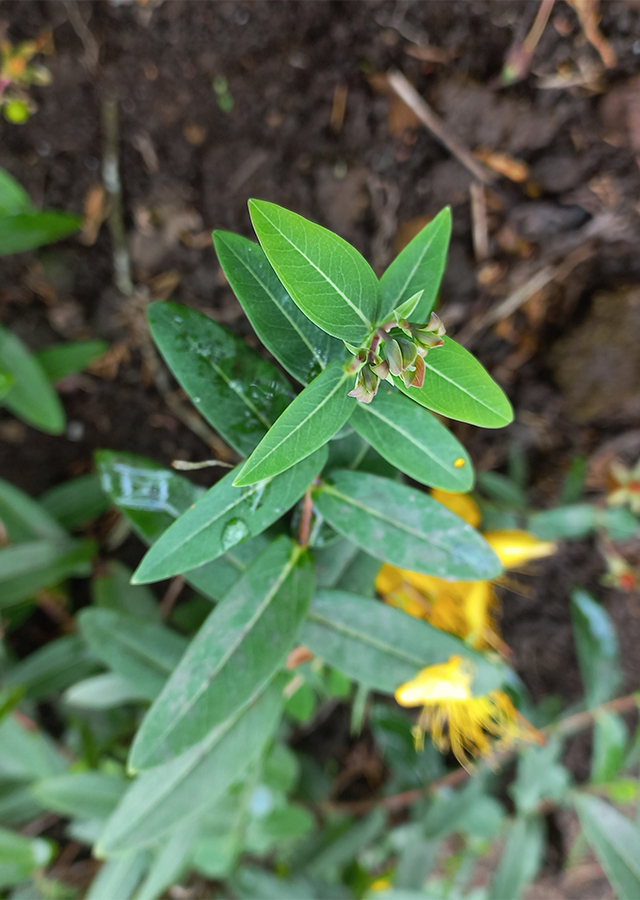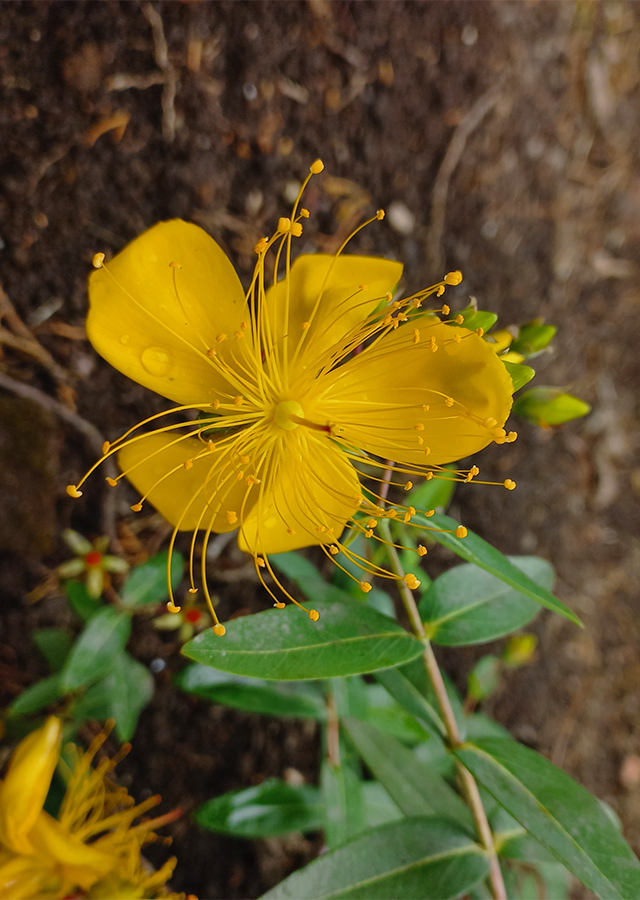Traditional Herbs from Hypericum perforatum
bruise
- Prepare enough flowers and leaves\u00a0St. John's Wort, wash until clean.
- Crush until it becomes a paste.
- Put the paste on the bruised part.
rheumatism
- Prepare the flowers fresh St.
What is Hypericum perforatum Looks like??



Parts of Hypericum perforatum that could be used
- Leaves
- Flowers
- All Parts of the Plant
Hypericum perforatum Distribution
St. St. John's Wort originates from Europe, including England, south and east spreading to North Africa, the Azores, Madeira and West Asia. St. St. John's wort has a long history of herbal use. This plant fell out of favor in the nineteenth century but recent research has brought it back to prominence as an invaluable remedy for nervous problems. In clinical trials around 67% of patients with mild to moderate depression improved when consuming this plant. St. St. John's wort (Hypericum perforatum L. 1753, Hypericaceae), a species widely used in traditional and conventional medicine. Until now, carried out in vitro and in vivo, as well as clinically, research has shown antioxidant, antiviral, antifungal, antibacterial, wound healing, antidepressant and many other properties of Hyperici herba.
Agroecology of Hypericum perforatum
Easy to grow in moderately well-drained but moisture-tolerant soil. Succeeds in dry soil. The plant grows well in sun or semi-shade but flowers better when in a sunny position.
Morphology of Hypericum perforatum
- The stems\u00a0reddish are erect and branched at the top, and can grow up to 1 m (3 ft 3 in) tall. The stems are woody near the base and may appear to be fused from leaf scars.\u00a0The branches are usually clustered around a depressed base .
- Leaves\u00a0opposite and stemless are narrow and oval in shape and 1-2 cm (0.39-0.79 cm) long in).\u00a0Leaves borne on branches cover shortened branches. The leaves are yellow-green, with scattered translucent dots of glandular tissue.The dots look striking when held up to light, giving the leaves a \"hollow\" appearance. which refers to the plant's Latin name.
- The flowers measure up to 2.5 cm (0.98 in), have five petals and sepals, and are bright yellow with striking black dots at the tips of the upper branches, between late spring and early to mid summer Cymes leaves and produces many flowers. The pointed sepals have black glandular points. The numerous stamens unite at the base to form three bundles. Pollen grains are ellipsoidal in shape.
- Seeds\u00a0black and shiny, leathery, netted with rough grooves.
Cultivation of Hypericum perforatum
Generative propagation uses seeds, sow the seeds in the greenhouse as soon as they are ripe. Usually germinates in 1 - 3 months at 10 °C. Plant the seedlings into individual pots when they are large enough, planting them into permanent positions. For vegetative propagation, use the clump division method. This method is said to be very easy, larger clumps can be replanted directly into their permanent position, although it is best to plant smaller clumps and grow them in a cool room until they are well rooted.
Hypericum perforatum, more details :
Chemical Content of Hypericum perforatum
Phloroglucinols (hyperforin, adhyperforin), naphtodianthrones (hypericin, pseudohypericin), flavonoids (rutin, quercetin, quercitrin, isoquercitrin, hyperoside, and amentoflavone), phenolic acids, pectin, choline sitosterol, and small amounts of essential oils.
Benefits of Hypericum perforatum
Used in treating a variety of disorders, including lung complaints, bladder problems, diarrhea, gastric and biliary disorders, inflammation of the respiratory and urogenital systems, migraines, diabetes, and nervous depression. It is also very effective in treating urinary incontinence in children. Externally, used in poultices to remove flock tumors, caked breasts, bruises etc. Use the plant with caution and do not prescribe it to patients with chronic depression. The plant was used to perform abortions by some native peoples of North America, so it should not be used by pregnant women, treatment of external boils, burns, wounds (especially those with severed nerve tissue), bruises, cramps, boils, swelling, rheumatism, skin treatment burns and as a cosmetic preparation for the skin, treatment of AIDS, bites, insect stings, treatment of areas that have a lot of nerves such as the spine, eyes, fingers etc. injured. Has analgesic, antiseptic, antispasmodic, aromatic, astringent, cholagogue, digestive, diuretic, expectorant, soothing, solvent, sedative, stimulant, vermifuge and vulnerary activities.
Simplisia of Hypericum perforatum
- Prepare enough fresh St. John's Wort flowers,\u00a0wash thoroughly with running water\u00a0then drain.
- Dry in direct sunlight for several days or in an oven at a temperature\u00a040\u00b0C until the moisture content\u00a010%." ,"Store\u00a0simplisia in plastic or a clean, airtight container.
Another Facts for Hypericum perforatum :
Synonym of Hypericum perforatum
Hypericum officinale Gaterau, Hypericum officinarum Crantz, Hypericum vulgare Lam.
Habitus of Hypericum perforatum
Herb. Annual herb, up to 90 cm high
Habitat of Hypericum perforatum



No comments:
Post a Comment